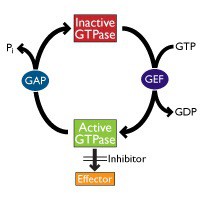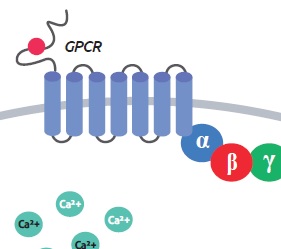The Silicon Rhodamine-like (SiR) technology has significantly contributed to the recent development of DNA and cytoskeletal analysis by live cell imaging.
 In 2014, two new Silicon Rhodamine-like (SiR) fluorescent probes were released for studying actin & tubulin by live cell imaging. SiR-Actin and SiR-Tubulin are fluorescent probes compatible with most microscopes (including super-resolution settings) that directly stain actin & tubulin without the need to transfect cells with vectors expressing fluorescently labeled Actin or Tubulin. The two original dyes were successfully followed by a new SiR-DNA probe in order to visualize DNA in living cells.
In 2014, two new Silicon Rhodamine-like (SiR) fluorescent probes were released for studying actin & tubulin by live cell imaging. SiR-Actin and SiR-Tubulin are fluorescent probes compatible with most microscopes (including super-resolution settings) that directly stain actin & tubulin without the need to transfect cells with vectors expressing fluorescently labeled Actin or Tubulin. The two original dyes were successfully followed by a new SiR-DNA probe in order to visualize DNA in living cells.
The existing SiR stains have a λabs of 652 nm and a λem of 674 nm to be used with the Cy5 filter (Fig 1).
However, the continuously growing number of researchers using these stains asked us whether stains with different biophysical properties would be made available. In other words, they were asking “is there another colour to allow for double staining e.g. of Actin and Tubulin in living cells?”

Yes, a “second colour” SiR dye is now available for Multicolour Live Cell Imaging.
After putting in significant effort and energy, Spirochrome has developed and just released a new series of SiR Fluorogenic Probes for multicolour imaging in Living Cells: the SiR700 dyes.
SiR700 have unique optical properties as described in Fig 2 with a λabs of 674 nm and a λem of 716 nm. SiR700 dyes can thus be spectrally resolved from SiR allowing for dual color imaging of live cells (1).
As always, the new SiR700 fluorogenic probes are available through tebu-bio in Europe.
Which SiR700 stains are available?
Besides SiR-Actin, SiR-Tubulin, and SiR-DNA (all with a λem of 674 nm) you can now further boost your experiments with:
Furthermore, a SiR-based stain to visualize lysosomes in living cells has also been added.
This stain is based on coupling the SiR fluorophore to Pepstatin A, an inhibitor of the lysosome-resident protease Cathepsin D. This protein has already been used for the design of fluorescent probes in the past (1, 2). Both colors (λem 674 nm and λem 716 nm) have been made available:
SiR technology in action: multicolour Imaging of Actin, Tubulin, DNA and Lysosomes
Double staining with SiR-Tubulin and SiR700-Actin


Double staining with SiR-Tubulin and SiR700-Lysosome

Interested in testing the SiR fluorogenic probes in dual colour imaging experiments?
Get in touch via the form below to find out how you can benefit from a special introductory offer.
 Interested in learning more about tools like this?
Interested in learning more about tools like this?Subscribe to thematic newsletters on your favourite research topics.
References:
(1) Lukinavičius, G., Reymond, L., Umezawa, K., Sallin, O., D’Este, E., Göttfert, F., Ta, H., Hell, S. W., Urano, Y., and Johnsson, K.; Fluorogenic Probes for Multicolor Imaging in Living Cells, J. Am. Chem. Soc. 138 (30), pp 9365–9368 (2016).
(2) Chen, C.S., Chen, W.N., Zhou, M., Arttamangkul, S., Haugland, R.P.; Probing the cathepsin D using a BODIPY FL-pepstatin A: applications in fluorescence polarization and microscopy, J. Biochem. Biophys. Methods 42 (3), pp 137-51 (2000).



